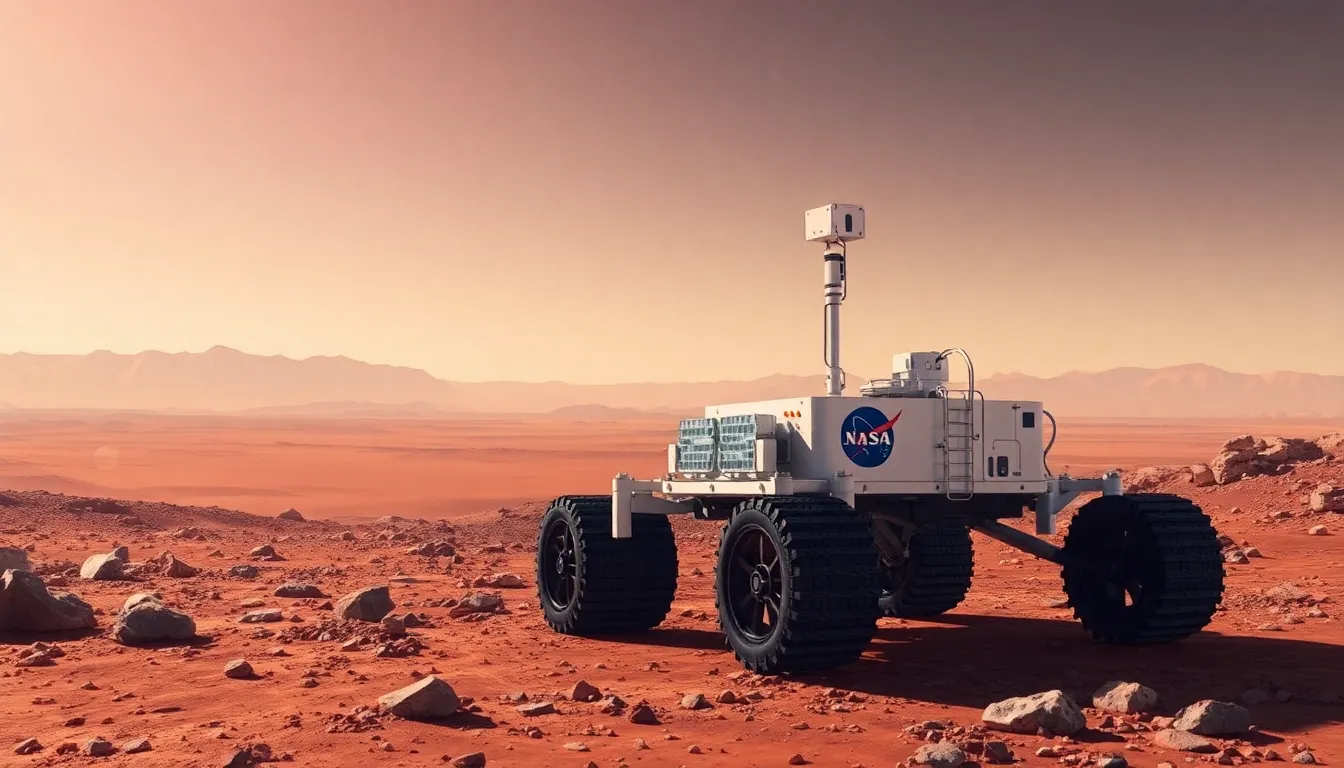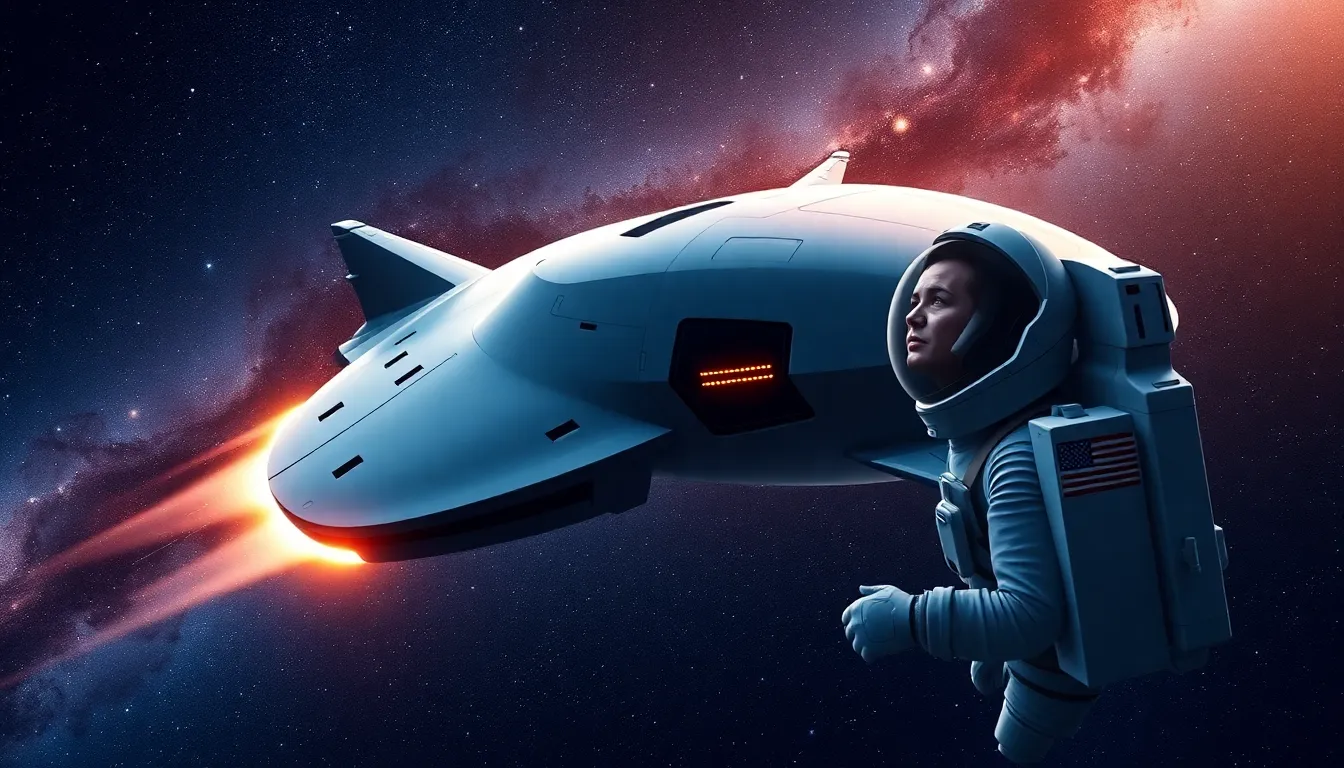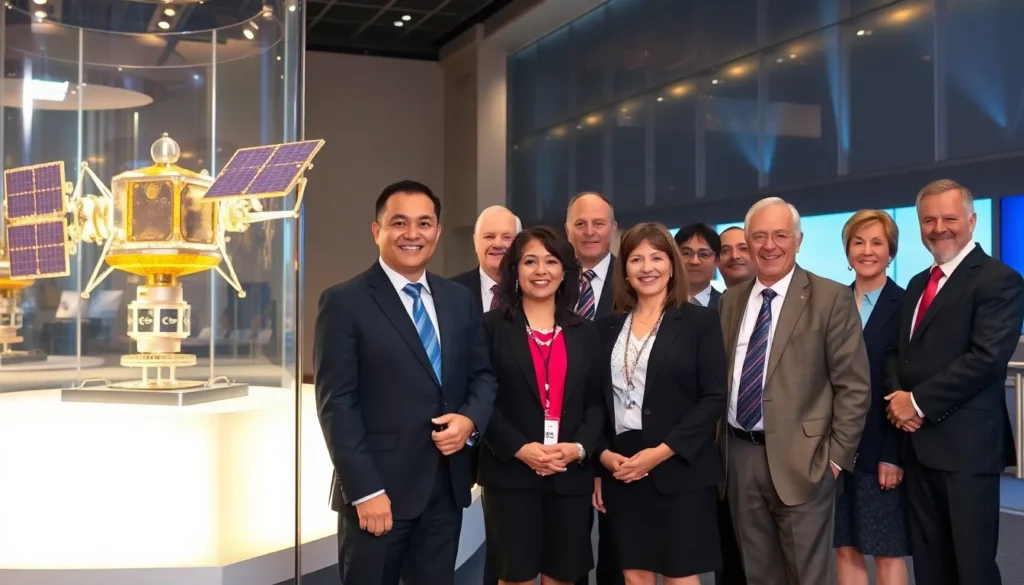Space: the final frontier, and it turns out, it’s a lot closer than you might think—at least with today’s technology. While we may not be zipping around in shiny starships just yet, humanity’s ventures into the cosmos have come a long way since the days of sending dogs into orbit. So how far can we really go with our current gadgets and gizmos?
Table of Contents
ToggleCurrent Space Travel Technology
Current technology enables significant progress in space travel. This section explores key advancements in propulsion and spacecraft design.
Rocket Propulsion Systems
Rocket propulsion systems drive modern space exploration. Liquid fuel engines, like those used by SpaceX’s Falcon 9, provide high efficiency and power. Solid fuel boosters, utilized in the Space Shuttle, offer simplicity and reliability. Ion thrusters, found in missions such as Dawn, use electricity to propel spacecraft with greater efficiency over long durations. With advancements in nuclear thermal propulsion, missions to distant destinations like Mars become more feasible, allowing for reduced travel times.
Spacecraft Types
Various spacecraft types support different missions in space. Crewed spacecraft, such as NASA’s Orion, transport astronauts beyond low Earth orbit. Uncrewed probes, like Voyager 1 and 2, explore the solar system’s outer regions, transmitting invaluable data back to Earth. Rovers, including Mars Perseverance, provide insights on planetary surfaces. Satellites serve diverse purposes from communication to Earth monitoring. Space stations, like the International Space Station, facilitate research and long-term human presence in space, significantly contributing to scientific knowledge.
Distance Traveled by Current Missions

Current missions highlight the vast distances humanity has covered in space exploration. Mars missions and Voyager probes serve as prime examples of our capabilities.
Mars Missions
NASA’s Perseverance rover has traveled over 10 miles on Mars since landing in February 2021. This mission’s purpose includes searching for signs of ancient life and collecting rock samples. Notably, the rover’s technology enables it to traverse challenging terrains. In comparison, the Opportunity rover covered approximately 28 miles during its 15-year mission. Both missions demonstrate efficient travel on the Martian surface, enhancing our understanding of the planet.
Voyager Probes
Launched in 1977, Voyager 1 and Voyager 2 probe the outer planets and beyond. Voyager 1 currently rests over 14 billion miles from Earth and is the most distant human-made object in space. Its mission includes studying the heliosphere and discovering interstellar phenomena. Voyager 2 has traveled over 11 billion miles, providing critical data about Uranus and Neptune. Data from these probes continues to transform knowledge of our solar system and the broader universe.
Limitations of Current Technology
Current technology imposes several limitations on space travel. These constraints affect how far humanity can venture into the cosmos.
Speed Constraints
Speed greatly limits space exploration capabilities. Conventional rocket propulsion systems, like those used by SpaceX and NASA, offer average speeds of around 17,500 miles per hour, primarily for low Earth orbit missions. Even at this speed, reaching Mars takes about six to nine months. Interstellar travel remains far more daunting, with Voyager 1 traveling around 38,000 miles per hour but still taking over 73,000 years to reach the closest star system, Alpha Centauri. As a result, the immense distances within and beyond our solar system challenge existing technologies. Advancements in propulsion methods, such as nuclear thermal or ion propulsion, show potential for faster travel, yet widespread implementation remains uncertain.
Life Support Systems
Life support systems present additional challenges for long-duration space missions. Current systems provide essential resources, including oxygen, water, and food, but significantly restrict mission length. NASA’s Orion spacecraft supports up to 21 days without resupply. Sustainable life support solutions, such as closed-loop systems, could extend this duration. Developing these systems involves complex engineering and substantial research. Scientists are exploring advanced recycling techniques and bioregenerative life support, which rely on natural processes to sustain crew members in space. Nevertheless, the logistics of transporting adequate supplies and maintaining crew health during extensive journeys remains a crucial limitation for future missions.
Future Prospects in Space Travel
Advancements in space travel technology pave the way for exciting future missions. Innovators focus on developing new propulsion systems that promise to extend the reach of human exploration.
Advances in Propulsion Technology
New methods in propulsion technology may revolutionize space travel. Electric propulsion, such as ion thrusters, offers greater efficiency for long-duration missions. SpaceX’s Raptor engines combine methane and oxygen, demonstrating a shift towards more sustainable fuel options. Developments in nuclear thermal propulsion also present opportunities for faster travel times. NASA’s research into advanced propulsion aims to cut journey durations significantly, making destinations like Mars more accessible.
Potential Breakthroughs
Breakthroughs in propulsion could open doors to interstellar travel. Concepts like the Breakthrough Starshot initiative propose utilizing light sails propelled by powerful lasers. This technology could theoretically decrease travel time to nearby stars to mere decades. Additionally, advancements in fusion propulsion hold potential for explosive speed increases, making it possible to traverse vast distances. Innovations in propulsion not only expand our reach in space but also enhance mission safety and efficiency. Embracing these advancements can redefine space exploration and lay groundwork for human settlement beyond Earth.
The journey of space exploration is just beginning. Current technology has brought humanity closer to understanding the cosmos and has expanded the boundaries of our reach. While significant challenges remain in terms of speed and life support systems, ongoing advancements in propulsion technology hold promise for the future.
Innovative approaches like electric propulsion and nuclear thermal engines could redefine our capabilities and make distant destinations more attainable. As research progresses and new breakthroughs emerge, the dream of interstellar travel may one day become a reality. The quest to explore space continues to inspire and motivate, pushing the limits of what’s possible.




